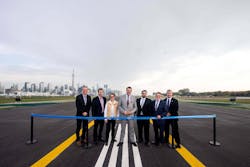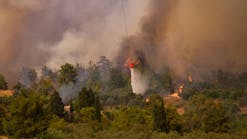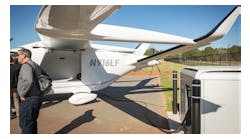Billy Bishop Airport Airfield Rehabilitation Project Marks Important Milestone
On Nov. 3, Billy Bishop Toronto City Airport (Billy Bishop Airport) officially re-opened runway 06-24 following an extensive rehabilitation of the runway earlier this summer. Billy Bishop Airport’s Executive Vice-President Gene Cabral was joined by representatives from Porter Airlines, Greater Toronto Airways, Canadian Owners and Pilots Association (COPA), Toronto Island Pilot’s Association (TIPA), WSP Canada Inc. and Pave-Al Limited to participate in a ribbon cutting ceremony to celebrate the major milestone in the Billy Bishop Airfield Rehabilitation Project – the resurfacing of runway 08-26 and the full reconstruction of runway 06-24. This significant three-year rehabilitation initiative which began earlier this summer is necessary to replace existing aging civil and electrical infrastructure to modernize the airport. This work also includes replacing the runway lighting to energy-efficient LED lighting, restoration of the runway and reconfiguring taxiways.
“After a summer of intensive construction to restore and repave the runways at Billy Bishop Airport I am pleased to come together with representatives of our airport community to celebrate this major milestone in the project,” said Gene Cabral, Executive Vice-President of Billy Bishop Toronto City Airport and PortsToronto. “These initiatives to modernize the airport will ensure it continues to serve as an economic engine for the city, provide much needed aviation service and provide efficient service to the 2.5 million passengers who travel through the airport each year.”
Special procedures such as the barging of materials and supplies were implemented to ensure minimal impacts on local residents as well as travellers. Additionally, given that a portion of construction activities took place during night-time hours when the airport is closed to air traffic, PortsToronto implemented a number of measures to minimize the community impact, including limitations on construction vehicle access and construction-related noise, as well as directing construction lighting downward and away from neighbourhoods.


